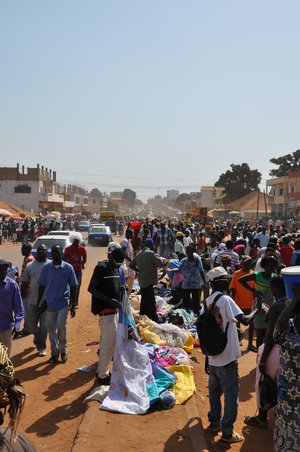Tuberculosis Case Finding
According to WHO, about 1.3 million died of tuberculosis in 2012. The majority of cases and deaths occur in poor countries in Africa, Asia and the Pacific, where many people die of tuberculosis without ever being diagnosed with the disease. There are several reasons why. Some of the poorest countries in Africa do not have the necessary hospital equipment and educated health care workers to make the diagnosis. Most of the population live far from the nearest health care clinic and cannot receive medical treatment in time. In addition, a large part of the persons, who develop active tuberculosis, are infected with other diseases that make the pathological pictures more complex with the risk that TB is not detected.
The purpose of this research project is to develop and test a simple but effective method to detect more TB cases in countries where the health care staff doesn’t have access to advanced hospital equipment. In the West African country Guinea-Bissau, where some of the employees from Department Q have worked and researched, we have used a so-called clinical score to identify possible TB cases.
WHO’s standard test for TB suspicion is if the patient has been coughing for two weeks, but our experience from countries including Guinea-Bissau shows that not all TB cases meet this cardinal symptom. Therefore we have developed a method of detecting TB that consists of some broader criteria, which are based on 11 different clinical studies. This clinical score gives a very accurate picture of the patient’s health and can therefore be used to assess which patients need to go through more tests.
An effective tool in poor countries
In places, where it is not possible to send patients to MRI or bronchoscopy, and where help professionals may be poorly trained, a clinical score can be an effective tool to detect TB cases, so the treatment can be started in time.
The clinical score serves as a checklist where the patient’s temperature and weight is measured; you listen to the heart and look for signs of anemia. After the examination you get a score that determines whether the patient should be tested further. Here a cough test and an X-ray determine whether the patient has active tuberculosis.
If the TB is detected in time, the disease is not nearly as serious and can usually be treated with pills for six month. Unfortunately a pat of the TB patients in Guinea-Bissau dies in the beginning of the treatment, because the disease is detected too late. We believe, that with the clinical score it will be possible to find more TB cases before it is too late. In addition, the systematic approach will teach the health care staff when to suspect a TB case and this will save many human lives. We have also learned that there is a certain element of training in getting the staff used to systematically reviewing all clinical points. Patients do not always tell exactly the things that are the most interesting to know, and therefore you have to ask structured to get an accurate clinical picture.
Results:
Currently two studies have shown, that the clinical tuberculosis score makes sense in a country like Guinea-Bissau. Both in a health care center among adults with all kinds of symptoms and in a HIV clinic where we have screened all new HIV patients because they are more vulnerable to TB.
We are now planning larger studies in order to demonstrate that the clinical score makes it possible to diagnose more TB cases in time and at the same time it reduces the mortality, because we can focus on the most ill patients.

Contact:
Staff doctor:
Lektor, PhD Christian Wejse
Mail: wejse@dadlnet.dk
Tlf: 78 45 28 53